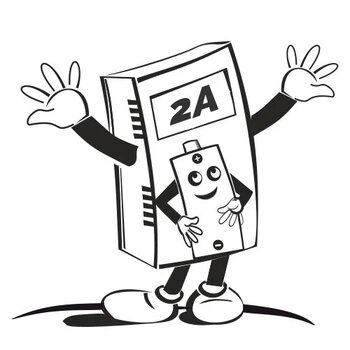- Tips
- technology
- Frequently Asked Questions
- Tests
- mAh capacity
- Rated Capacity
- everActive
- comparison
- Durability of rechargeable batteries
- Efficiency of rechargeable batteries
- battery voltage
- Accumulated energy
- Batteries vs rechargeable batteries
- LR03 AAA
- LR6 AA
- eneloop
- AG13 LR1154 LR44
- Delta V
- Charge Cycles
- internal resistance
- charge level
- CR 2032
- memory effect
- accredited test
- SR44 357
- Hearing Batteries 675
- SR626 377
- Watch Batteries
- Polarity
- Mah
- passivation
- LS 14250
- LS 14500
How is it that the charger has a 1A power supply, and the charger manufacturer also provides charging 4 batteries with 1A – after all, this gives a total of 4A?!

Well, not necessarily, because the output current/current is a value that can only be compared when the output voltage of a given power source is the same (or very similar). The value that we can always compare between different power sources is the power - only on this basis can we say that a given power supply is more powerful than another.
To begin with, let's remind you what the formula for the power of the device looks like:
P (power) = U (voltage) * I (current)
Why is it so important? Comparing the current/current values alone, one can come to very wrong/abstract conclusions. For example – let's take a 500W hammer drill powered from the 230V mains. Such a drill requires just over 2A of current to work. 2A of current is relatively low – a typical Ni-MH AA rechargeable battery – e.g. the popular Eneloop finger is easily able to give off up to about 5A of output current.
Does this mean that we can power a hammer drill from one small battery? – after all, the electricity is "right".
Of course, we are not able to power a 500W device from one such battery - apart from a completely different output voltage of such a battery, the capabilities of a given power source are not determined by the current itself, but by the aforementioned power, which is the product of voltage and output current.
We will explain this using our example with a charger:
The charger is designed to charge 4 AA/AAA Ni-MH 1.2V rechargeable batteries with 1A charging current, and it comes with a 1A 12V power supply. Is such a power supply enough to charge each of the 4 cells with as much as 1A?
The answer is – it is enough and with a large margin.
The 12V / 1A power supply has a power of 12V x 1A = 12W.
The charging voltage of a typical Ni-MH battery usually does not exceed 1.6V.
So to charge 1 piece of battery with 1A current, we need power: 1.6V x 1A = 1.6W. For charging 4 pcs. at the same time, our demand will increase 4 times – we will need: 1.6W x 4 = 6.4W.
So to sum up – the charger's power supply has a power of 12W, while to charge 4 batteries with maximum efficiency you need ~6.4W. Of course, the charging process is not perfectly effective and some losses occur during the operation of the charger, but in such a situation, nearly 2 times the power supply reserve is completely sufficient for any good charger.
Copying the content of the article or its part without the consent of a representative of Baltrade sp. z o.o. is prohibited.